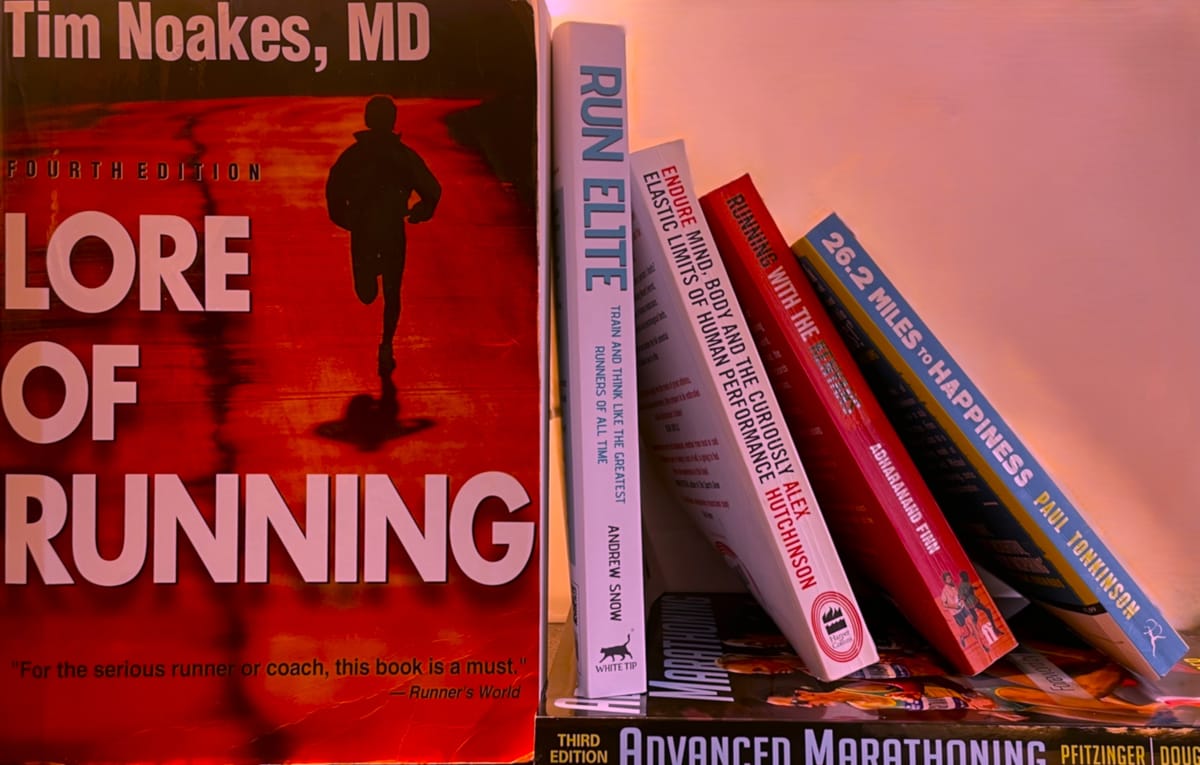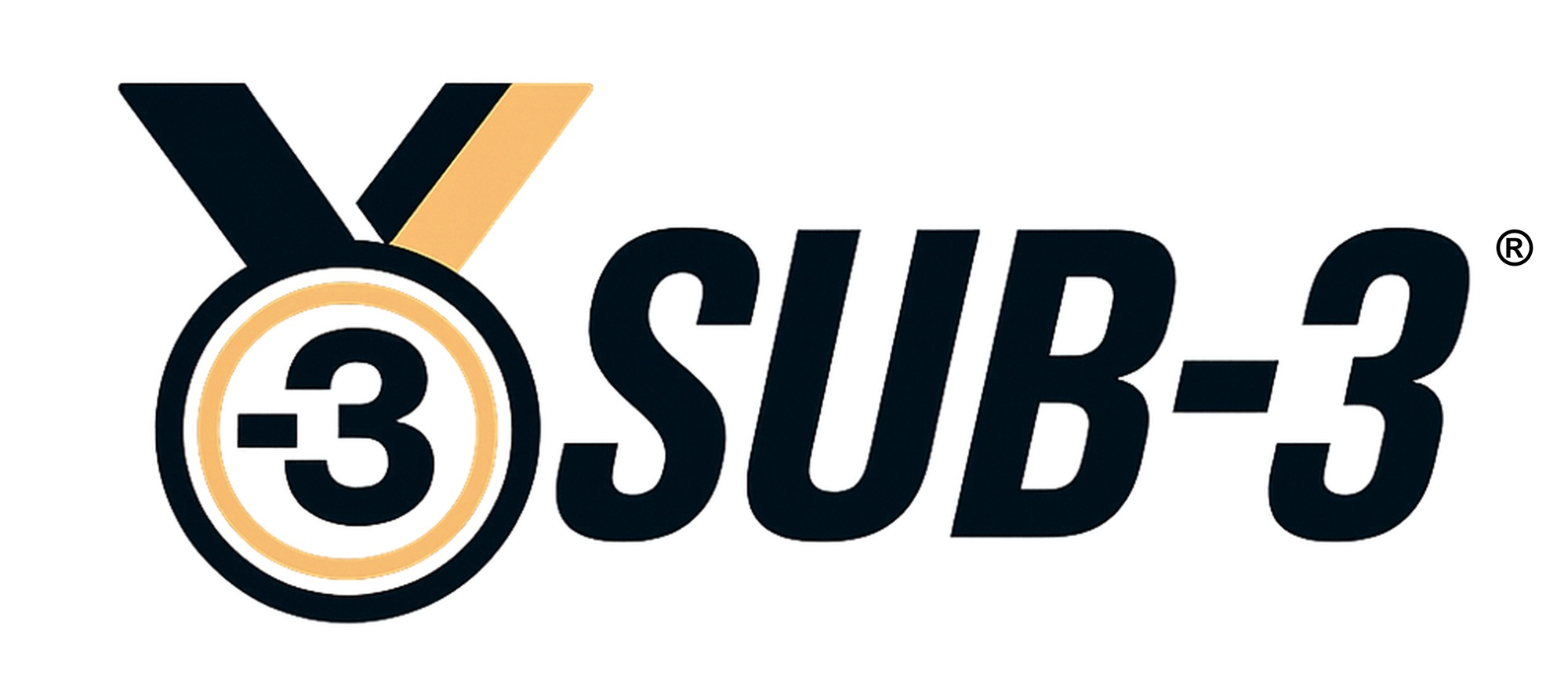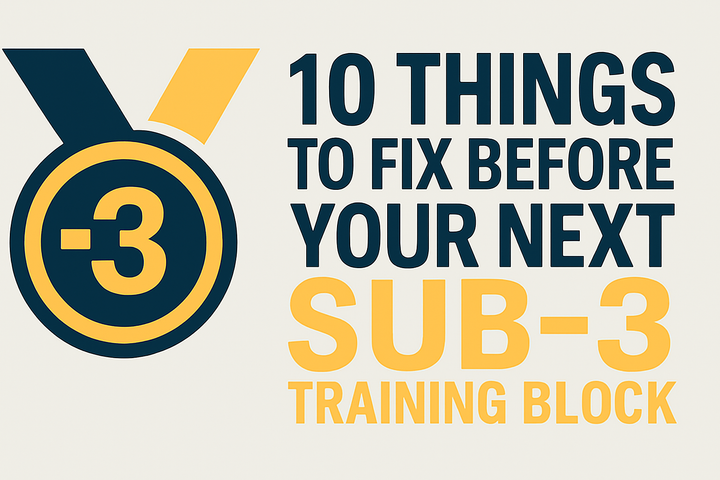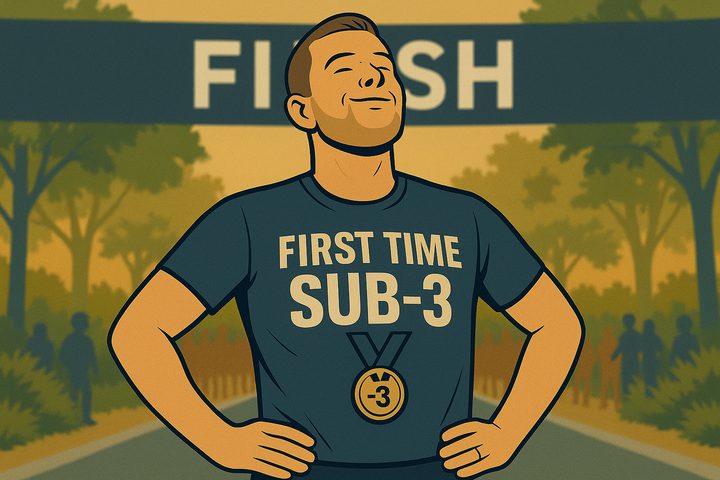Five books every sub-3 marathon runner should read
These five books capture the science, soul and mindset of sub-3 running—alongside one bonus classic for those looking for a proven training blueprint.

To run a sub-3 marathon, you need more than a well-structured training plan. You need insight, resilience and a genuine fascination with the sport. These five books have earned a place on the shelf - and in the minds - of many serious runners. They offer more than tips or templates. They provide context, challenge assumptions and give you something to carry with you through the hardest miles.
Each of these is worth returning to - not just for answers, but for perspective.
1. Lore of Running – Tim Noakes
Lore of Running is unlike any other running book. Tim Noakes, a South African physician and lifelong endurance athlete, has created something truly monumental. A cathedral to the art and science of running. Blending cutting-edge physiology with personal reflection, historical analysis and practical guidance, this is as close as one can get to a complete map of the endurance landscape.
What sets Lore apart is its ambition - it tackles everything from muscle fatigue and energy systems to injury prevention, hydration, overtraining, racing psychology and the biographies of iconic athletes. There are training plans here too, but they’re only one strand of a much larger tapestry.
This isn’t a book to read in one go - it’s a book to live with. You’ll return to different sections at different times in your running life, and each time find something you missed. Sub-3 runners don’t just read Lore - they carry it with them, sometimes literally, often mentally. It’s not light, but it’s indispensable.
In Endure, Alex Hutchinson asks a deceptively simple question: what stops us from going further? Is it oxygen? Fuel? Heat? Pain? Or something more elusive—like belief? Drawing on the work of physiologists, psychologists and his own background as an elite middle-distance runner, Hutchinson makes the case that the brain plays a far greater role in limiting performance than most runners realise.
One of the book’s most striking themes is motivational self-talk - the idea that the words we use with ourselves mid-run can shape outcomes. Athletes who practise affirming, focused inner dialogue tend to push further and tolerate more discomfort than those who let doubt creep in. As Hutchinson writes, if he could go back and change one thing in his own career, it would be to take self-talk training seriously—“with diligence and no snickering.”.
The book is also timely: written around the early stages of Kipchoge’s sub-2 marathon attempts, it examines the broader boundaries of human endurance just as they were being publicly redefined. For sub-3 runners, Endure isn’t just insightful - it’s practically useful.
Run Elite is written for runners who think seriously - and sometimes obsessively - about improvement. Andrew Snow’s tone is sharp, opinionated and refreshingly direct. He writes for people aiming high and isn’t afraid to challenge conventional wisdom along the way. Whether it’s VO₂ max, lactate thresholds, progressive overload or the 10% rule, Snow isn’t interested in sacred cows - only in what works.
The book is split into three punchy sections: Mindset, Elite Training and Special Workouts and Elite Hacks. The first focuses on how elite runners think and approach training differently - not just with more effort but with more clarity and control. The second breaks down what elite-level training actually looks like in terms of structure, periodisation and progression. The third delivers exactly what it promises: practical tweaks and innovative tools, from palmar cooling on hot days to emerging supplements like NAD+.
This isn’t a conventional how-to guide. It’s not about ticking boxes or following rigid plans. It’s about thinking like an elite - even if you’re not one. Sub-3 runners who already know the basics will find this book energising, useful and slightly provocative in the best possible way.
4. Running with the Kenyans – Adharanand Finn
Adharanand Finn’s journey to Kenya is part investigation, part memoir and part meditation on what it means to run seriously. Frustrated by his own limitations and intrigued by the dominance of Kenyan distance athletes, he uproots his family and moves to Iten - a small, high-altitude town that has become a global centre of endurance excellence.
Rather than reducing Kenyan success to a single factor, Finn explores its many dimensions: genetic, environmental, economic and cultural. He meets barefoot schoolkids running to class, self-coached elites living in basic conditions and coaches who think less about lactate curves and more about rhythm, belief and joy. What emerges is a picture of running not as a science or a job, but as a way of life.
What sub-3 runners can take from the book isn’t a blueprint - it’s a recalibration. A reminder that simplicity, environment and shared purpose matter. That obsession doesn’t have to be lonely. That there’s more than one way to become great.
5. 26.2 Miles to Happiness – Paul Tonkinson
Marathon training can feel lonely, joyless or overly serious - especially when you’re chasing a big milestone like sub-3. Paul Tonkinson’s account of his own journey brings a welcome dose of honesty and levity. A professional comedian and experienced club runner, Tonkinson sets his sights on going sub-3 at the London Marathon, aged 47, and documents every twist of the journey with warmth and wit.
This isn’t a training manual, although plenty of training content makes its way in. He reflects on early morning runs, Yasso 800s, mantras, injury setbacks and even the occasional hangover (he’s candid about trying to avoid “Two Bottle Sundays”). But the heart of the book is emotional - it’s about how much a goal like this can matter, and what it takes to get there.
Tonkinson’s description of the final stretch down The Mall is memorable - not because it’s grand, but because it’s human. For sub-3 runners, 26.2 Miles to Happiness is a rare thing: a book that understands both the seriousness of the goal and the odd rituals that surround it. You’ll laugh, but you might also recognise yourself on the page.
Honourable mention: Advanced Marathoning – Pfitzinger & Douglas
For those who want structured plans, periodisation frameworks, tapering schedules and pacing strategies, Advanced Marathoning remains a cornerstone. Many sub-3 runners have followed Pfitzinger’s plans to the letter. Its omission from the top five is not a critique of its value - only a reflection of the fact that Lore of Running covers similar material, while offering much more besides.
Still, if you’re looking for a clear and methodical training structure with time-tested guidance, this book is hard to beat.
Sub-3 marathon running demands more than physical effort. It requires curiosity, focus, adaptability and a strong sense of why you’re doing it. These five books offer more than instructions. They give insight into the nature of endurance, the culture of running and the mindset required to cross the finish line in under three hours.
They won’t do the work for you - but they’ll change how you think about the work, and could get you closer to that sub-3, or beyond.
Enjoyed this article? Help keep Sub-3 running — support us with a coffee.
To help fund the running of the site, Sub-3 is an Amazon Associate and earns from qualifying purchases. We only recommend gear or kit that has genuinely helped in our own running and that we believe is worth considering.



